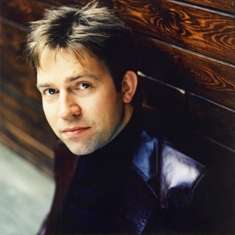|
Back
I Sing The Body Eclectic New York
Avery Fisher Hall, Lincoln Center
12/30/2009 - & Dec 30, 2009, January 2, 2010
Anton Webern: Im Sommerwind (In The Summer Wind) – Symphony for Chamber Orchestra, Opus 21
Wolfgang Amadeus Mozart: Piano Concerto No. 23 in A Major, K.488
Robert Schumann: Symphony No. 2, Opus 61
Leif Ove Andsnes (Piano)
New York Philharmonic Orchestra, Alan Gilbert (Conductor)

L. O. Andsnes (© Simon Fowler/EMI Classics)
Eclecticism was the theme of last night’s concert. From the Classical era came one of Mozart’s greatest piano concertos, with an artist ready to do it justice. Robert Schumann contributed a symphony of majestic proportions. But most interesting of all were two dissimilar works by Anton Webern.
Audiences are familiar with Webern’s Bach arrangement, and they should be aware of his marvelous Johann Strauss orchestrations. But Im Sommerwind, his youthful Late Romantic piece which was heard first only in 1961, is a joy. Written ten years before Richard Strauss’s Alpine Symphony, it has the same theme (walking in the wilderness), though characteristically one-quarter the duration. The main tune is eminently whistleable, the effects of wind, water, walking and hillside frolicking, played by a large orchestra devoid of trombones, are tastefully done, and it has the sweet pine tree aroma of Mahler’s First as well as the Strauss. It was played engagingly by Alan Gilbert.
I mentioned the “whistleability”, since Webern declared that within 50 years of his Symphony, young children would be whistling its music. Well, 1976 has come and gone, and we still have few kids who know a double canon from a ricercare. Still, this was a major work, and in 2009, we can feel about it as we feel about DNA or quasars or black holes. (Stravinsky compared it to cutting a diamond, but diamonds are only rocks.)
More specifically, this was music for an aural electronic telescope or microscope. Yes, Webern had a 12-tone scale, but the notes are separated by instruments (which play only one or two notes) and octaves. But heard carefully, even with little technical knowledge, the piece had an unearthly delicacy and–perhaps after a few hearings–a true melodic consistency. The second movement, a series of seven variations, ends before it hardly starts. The instruments play more than one or two notes, but one hardly noticed, since it came and left with light-year speed.
Did the chamber Philharmonic play it “right”? Purists with a score might take issue with a crescendo or duration here or there, but I found the Phil’s rendering clear and clean, its complexity and color most agreeable.
Nobody could query Leif Ove Andsnes who, hopefully, has a New Year resolution to play more and more in Manhattan. Whatever he does, whether in experiment or mainstream, is done with crystal-clear technique, understanding, and wondrous communication. That isn’t easy in K.488, whose outer movements communicate a diversity of emotions. For this, we had to rely on Mr. Andsnes’s hands which rippled up and down the keyboard with gossamer lightness. The Adagio, though, is shattering in its pathos. Mr. Andsnes had no need to dwell on the theme, which spoke for itself. By taking Mozart “straight”, he gave the music its greatest compliment.
The final piece was Schumann’s Second Symphony, which began blurred, without shape, but which soon developed into a sturdy triumphant work, on the cusp of Schumann’s angelic gift of pure spontaneity.
************************************************
CODA I: While I’m no great fan of mid-concert explanations, Alan Gilbert does a creditable job describing particularly complex music (such as the Webern Symphony). Mr. Gilbert’s notes in the program. are vastly more appreciated, for his personal enthusiasms and insights. I hope that he continues his singular commentaries, even in music for which is he is less than enthusiastic.
CODA II: George Bernard Shaw once wrote that the only way he would hear Brahms’ Requiem a second time is if he had a newspapers and an interesting book to read during the performance. Mr. Shaw would have enjoyed Avery Fisher Hall, where the lights are only fractionally turned down during a performance, so one can read, stare across the aisle or play Scrabble. While not a sin, the lighting does detract from the musicians, whose own incandescence should provide the only lighting for we mortals in the audience.
Harry Rolnick
|